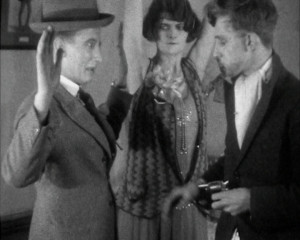
"A man entertains a married woman in her own home. He has previously stolen money from her husband’s wallet and hides the money in a book. The woman in turn removes the money from the book and keeps it for herself. The husband discovers their dalliance and orders the man to go. The man returns and accuses the couple of stealing his money. A burglar interrupts the proceedings. The burglar searches the pockets of the husband and removes (what looks like) another woman’s handkerchief. The burglar then searches the pockets of the man and the wife, discovering the money. The burglar offers the money to the husband in order to recompense him for embarrassing him in front of his wife and proceeds to steal other items from the room, leaving his revolver on the floor. The burglar says farewell. The husband and the man square up to each other" (EAFA Database).
"This film was specifically produced for a meeting of the London Amateur Cinematographers’ Association on 27 March 1929. The film was the basis of a competition for the club members. The club’s members in this case were invited to record the mistakes incorporated into the film. The report in Amateur Films notes that the competition was won by Mrs Nora Pfeil, who recorded approximately 30 mistakes" (EAFA Database).
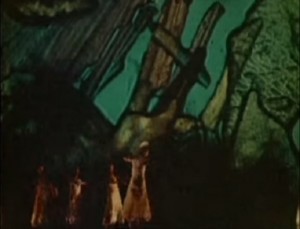
"Dancers move in front of a background made up of crystal formations filmed through a microscope. One of Norman McLaren’s first experimental films." Library and Archives Canada.
Edited film "chronicling travel through Tahiti and Mo'orea including scenic landscapes, aerial views, harbor scenes, resorts, local flora, markets, underwater scenes, dance and storytelling," Human Studies Film Archives, Smithsonian Museum.
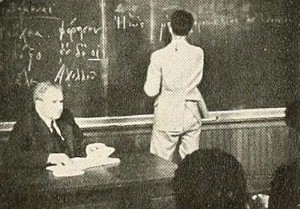
"The title of Pomfret Today, produced by the T. W. Willard Motion Picture Company, gives a clear impression of the subject matter of this recent addition to the Willard tradition of fine school films. Produced for the Pomfret School, in Connecticut, the picture provides a pleasant portrait of a gracious institution carrying on its work amid settings of quiet beauty. Studies, sports, hobbies and recreation — all are recalled here in sequences marked by a wealth of warm color and distinguished technical ability. A directly planned continuity is neatly edited and adequately titled, in a subject designed primarily for alumni screening." Movie Makers, Dec. 1937, 630.
"In the pond, many things are stirring - freshwater earthworms, and tiny aquatic creatures known as infusoria and daphnia. This remarkable amateur scientific documentary investigates microbes in a drop of pond water as seen through a microscope. The film was made by using a binocular eyepiece developed specifically for the purpose, and won many awards." (BFI Player)
"Apex Motion Pictures are busy on a story which entirely ignores the ordinary narrative channels: this production, they tell me, is right off the beaten track. In fact, I am told that this is a sincere attempt to produce the first real amateur story film, i.e. one in which the whole of the work is carried out cooperatively. This effort is to be issued as “Poor Jenny is Aweeping”, and Leslie Wood passes me the information that this film deals with a side of life which, though it affects everyone, has never, so far as he is aware, been handled in a book, play, or film. What is more, although A.M.P. claim to be the first with amateur talkies, they have now gone silent. Apex Publicity also states that Kurt Camerona, their cameraman, is playing the Rev. Cecil Teed, and is giving us something new in characterisation" (Head 1932: 21).
"noteworthy for having introduced yet another technical advance invented by Apex cameramen – “the dolly twist”, as it has been christened. The camera is turned over and over, gradually slowing down and remaining stationary, at the same time the dolly goes towards or away from the subject being photographed. Like all worth-while innovations, however, the shot was created to fit the peculiar demands of certain sequences of the film; it has not been dragged willy-nilly into the film simply for the novelty of the stunt. It is particularly valuable in films of the macabre genre" (HMHT 1933: 297).
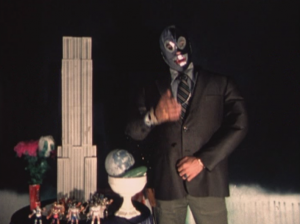
"Siete cortometrajes de Maris Bustamante y Rubén Valencia, integrantes del No Grupo, que indican el acercamiento de artistas plásticos al formato súper 8. Los trabajos del No-Grupo tendieron a hacer una reflexión a la vez lúdica y crítica sobre la naturaleza del arte" Superocheros.
"Seven short films made by Maris Bustamante and Rubén Valencia, members of the No Group, that indicate the interest of artists in the plastic arts to use the super 8 format. The works of the No Group were usually a playful and critical reflexion on the nature of art" Superocheros.
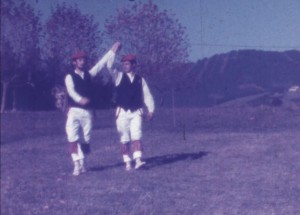
La primera parte de la película recoge la historia pasada de Bizkaia y el País Vasco a través de sus pueblos. En cada pueblo se realiza una narración relacionada con la historia de ese lugar y su contexto en relación a Bizkaia.
The first part of this film tells the past story of Biscay and the Basque Country by depicting its towns. Each town has a narration, related to that place's history and to its context relating it to Biscay.
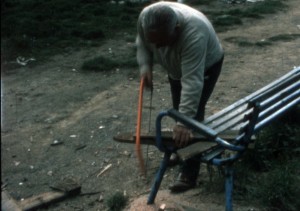
Segunda parte de la película que, partiendo del año1975, plantea qué ha sido de quienes perdieron la guerra. El filme habla de opresión, el mundo del trabajo, la evolución de los pueblos y los problemas que enfrentan.
The second part of the film starts in 1975, and tells the story of those who lost the war. The film speaks of oppression, the job market, the evolution of towns and the problems they face.
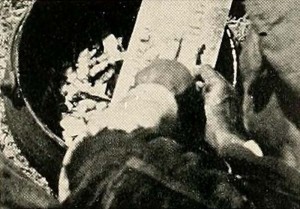
"Porpoise Oil presents a cleverly planned and charming story that shows how the Indians of the upper St. Lawrence region live today and how their ancestors obtained oil from the porpoise of the neighboring bays. Dr. Leighton was fortunate enough to find an old Indian who, in his younger days, had been a champion porpoise hunter and the picture tells in Kodachrome how the fish was shot and the oil tried. This constitutes an important document of Indian craft that, otherwise, in time would be lost to the world. A touch of humor throughout and a surprise ending serve to spice the film and to make it the excellent study that it is instead of a routine record film. The continuity is well developed and the photography is of good quality." Movie Makers, Dec. 1937, 630.
Total Pages: 299